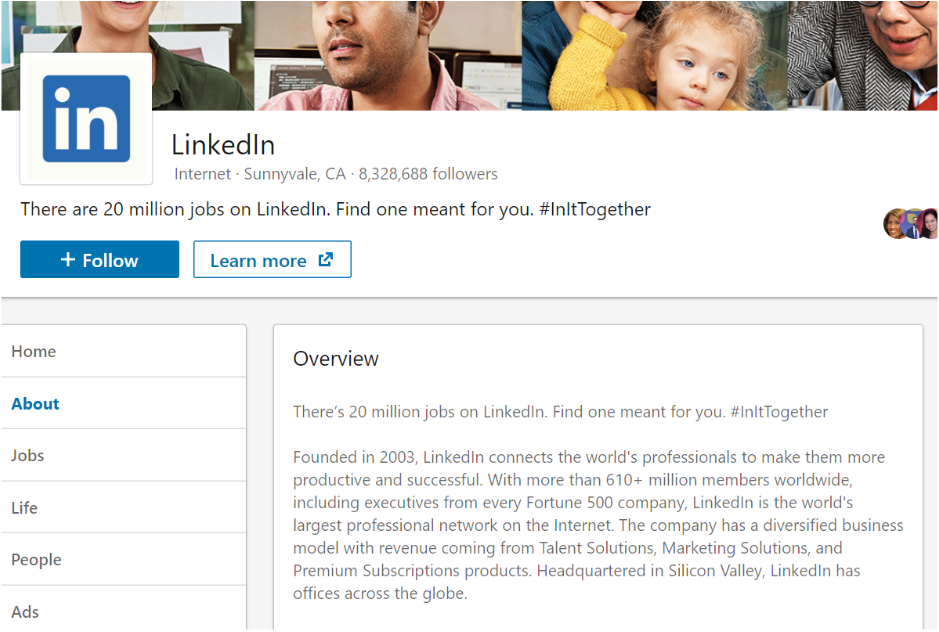Posted by Matthew Croghan in B2B Lead Generation & Sales Development, LinkedIn Marketing Insights

We talk a lot about “getting to know your prospect” so that you can use the information in your profile, in your messages and emails, and in your marketing.
But how do you actually incorporate that information?
This post is all about how to take your research and prospect profile and use it to write stronger copy and marketing materials.
Doing so will allow you to better entice them, connect with them, give them the feeling you understand them, they can trust you, and you’re the only one they should work with to solve their problems.
Use the points below in your social media profiles, your messages, websites, landing pages, white papers, reports, ads, or anything related to marketing and outreach communications.
Put the Reader First
This seems obvious, but you’d be surprised how many people forget to do this. They don’t do it on purpose, it’s just human nature. We all think of ourselves, and this is the biggest mistake you can make when you’re trying to write good copy; you need to step in their shoes in order to understand what motivates them. Then write about that.
That is where all your research comes into play. If you know –
- what their job title is,
- where they live,
- who they report to,
- what problems they have,
- and the effect those problems has on their day-to-day…
You’re able to get a decent understanding of what they need and what motivates them. Then when you go to write, you write in a way that appeals to their desires. Here are a couple quotes I love that explain this very well:
This is from Copyblogger, one of the best resources around for learning how to write copy:
It is our job as copywriters to tap into the hopes, dreams, and fears of our audience. This requires research and the magic of the word “you.”
Another is from a tiny little book called One Sentence Persuasion Course by Blair Warren:
“People will do anything for those who encourage their dreams, justify their failures, allay their fears, confirm their suspicions, and help them throw rocks at their enemies.”
What both these quotes are getting at is you…
- …have to know intimately the hopes, dreams, and fears of your prospects (even if you’re strictly B2B. Remember that you’re still selling to people, not a corporation) and you need to be able to relate those hopes, dreams, and fears back to them.
- …need to speak directly to your prospects. Take notice of how many times you talk about your company using the words “we” or “I” without explaining the benefits of your company to your prospects.
Take a look to see what LinkedIn does on its own company page on its platform:

You’ll notice that LinkedIn’s company profile on its platform uses “you” in order to speak to one of its primary targets – job hunters.
While LinkedIn is definitely talking about themselves, they are doing it in a way that highlights the benefits their target market cares about. Namely that if you’re a professional using LinkedIn will make you more productive and successful.
In your own profiles and marketing, focus on the benefits of what it means to work with you and your business. You’ll know what benefits to focus on if you know what’s important to your prospect.
Be Specific
Unless your company name is already well known in your industry and you have a large marketing budget, we always recommend you pick a niche to focus on. This way you can speak directly to your client’s needs.
For example, you might be an accountant that helps businesses with their finances. If you are able to speak to construction businesses specifically, you’ll be able to call out specific details that would be different if you were speaking to IT companies. It’s in this way,using what you know about specific clients that allows you to connect with them on a deeper level.
And when you can speak to their specific problems and needs as well as or even better than they can, it’s human nature for them to believe that you “get” them and that you’re the best choice to help them.
Write in a Natural Way
One of the things you need to know about your prospects is how they talk and what kind of language they use. How do you use it in your marketing communications?
It’s simple, you use their exact words back at them. Doing so is another way that shows you understand your prospects and their problems and needs and it goes one step further…
It keeps you on the same level.
For example, let’s say you sell websites to energy companies. You could easily get pretty technical getting into the details of what you offer and the kinds of benefits your prospects can expect.
But if you speak as if you were explaining your service (and its relevant benefits – don’t forget!) as if you were across the table in a coffee shop, you’d drop the “business speak” and just speak naturally.
Maybe you’re accustomed to using “business speak” in corporate communications.
We practice a more contemporary reimagining of our facilitating logistical flexibility.
We’re pursuing plans to implement ambient reciprocal programming.
You really can’t fail with homogenized incremental paradigm shifts.
It’s time to drop all that. There’s no connection there. Instead, take notice of the type of language that your best clients and prospects use and mirror it.
A Note About “Jargon”
Jargon, in general, should be avoided because it often doesn’t really mean anything. It’s vague and potentially arrogant in the wrong circumstance. However, there is a time and place for it. If there are certain industry terms relevant to your prospect’s industry, by all means, include them.
Craig Snow, a visiting senior lecturer of management communication at Cornell Johnson, explains the good side of jargon perfectly,
“There are two main benefits. The first is efficiency; it’s faster to refer to a SWOT analysis or the Porter five forces model than to define every part of these. The second is credibility – if you use terminology and use it well, it demonstrates you can talk the talk, that you’re familiar with it.”
The trick is to find that balance, and again, which means knowing your prospect, including what vocabulary they use and value.
A Note About “Style”
David Ogilvy said it best, “A good advertisement is one which sells the product without drawing attention to itself.”
When you’re going for connection, you draw on what problems your prospect has and you connect the dots to what they really want and how their day would look if they got it.
Using “style” in your writing only distracts from that.
Remember this wisdom from copywriter Joanna Wiebe,
“Here’s the only thing you’re selling, no matter what business you’re in and what you ship: you’re selling your prospects a better version of themselves.”
So instead of adding “style” to your copy, stick with speaking naturally and focusing on the benefits of what your service provides your prospects.
Your Turn
We’ve all seen those websites or profiles that you have to reread in order to understand what they’re saying. It just causes confusion and confusion is bad for business. Follow these tips to take what you know about your prospects and use it write in a way that’s clear, that connects and that makes you stand above the crowd.
If you’d like to know more about optimizing your LinkedIn profile, researching your prospects, and getting leads, register below for our free training now.
[thrive_leads id=’11940′]
